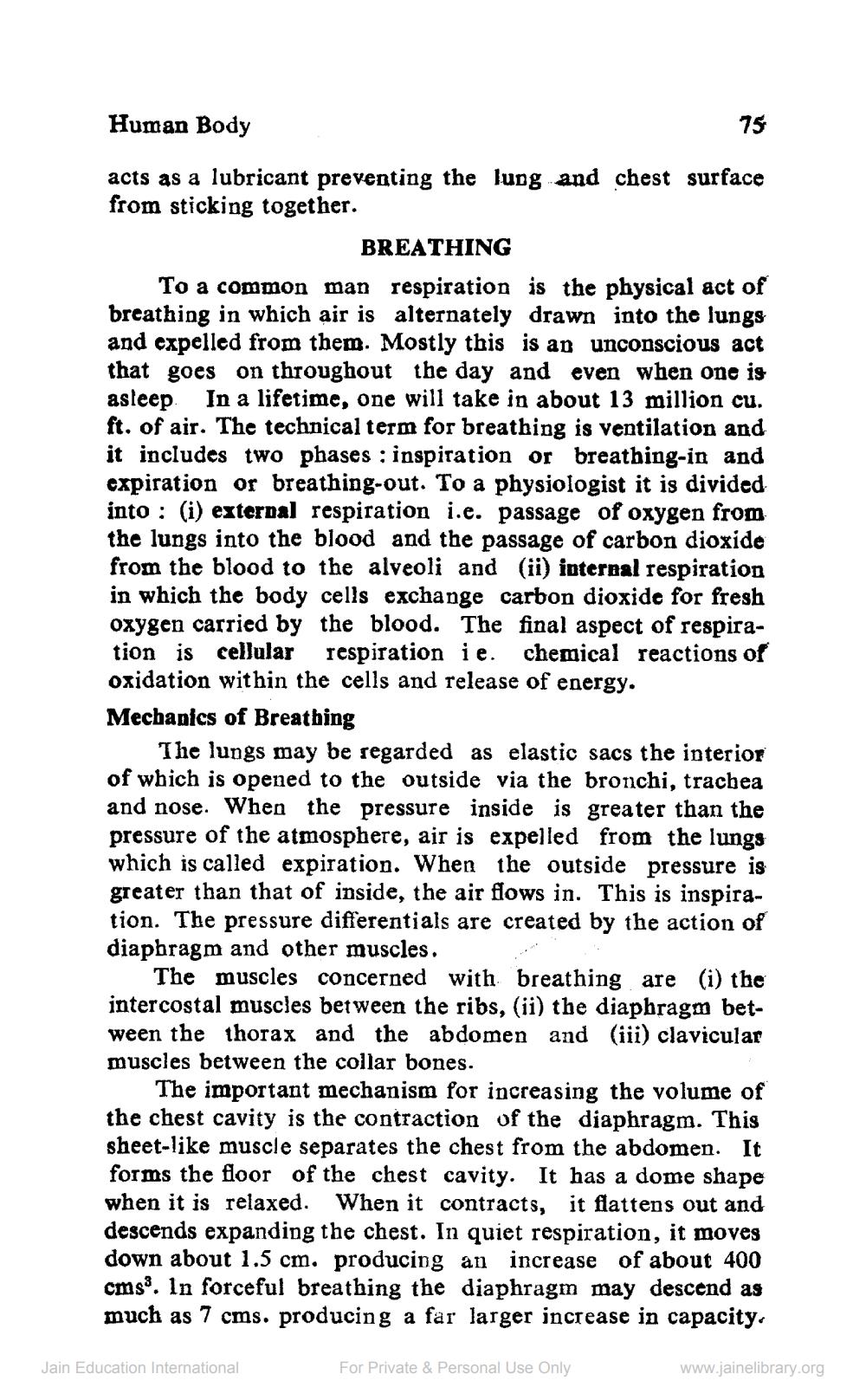________________
Human Body
acts as a lubricant preventing the lung and chest surface from sticking together.
BREATHING
To a common man respiration is the physical act of breathing in which air is alternately drawn into the lungs and expelled from them. Mostly this is an unconscious act that goes on throughout the day and even when one is asteep In a lifetime, one will take in about 13 million cu. ft. of air. The technical term for breathing is ventilation and it includes two phases : inspiration or breathing-in and expiration or breathing-out. To a physiologist it is divided into : (i) external respiration i.e. passage of oxygen from the lungs into the blood and the passage of carbon dioxide from the blood to the alveoli and (ii) internal respiration in which the body cells exchange carbon dioxide for fresh oxygen carried by the blood. The final aspect of respiration is cellular respiration ie. chemical reactions of oxidation within the cells and release of energy. Mechanics of Breathing
The lungs may be regarded as elastic sacs the interior of which is opened to the outside via the bronchi, trachea and nose. When the pressure inside is greater than the pressure of the atmosphere, air is expelled from the lungs which is called expiration. When the outside pressure is greater than that of inside, the air flows in. This is inspiration. The pressure differentials are created by the action of diaphragm and other muscles.
The muscles concerned with breathing are (i) the intercostal muscles between the ribs, (ii) the diaphragm between the thorax and the abdomen and (iii) clavicular muscles between the collar bones.
The important mechanism for increasing the volume of the chest cavity is the contraction of the diaphragm. This sheet-like muscle separates the chest from the abdomen. It forms the floor of the chest cavity. It has a dome shape when it is relaxed. When it contracts, it flattens out and descends expanding the chest. In quiet respiration, it moves down about 1.5 cm. producing an increase of about 400 cms. In forceful breathing the diaphragm may descend as much as 7 cms. producing a far larger increase in capacity.
Jain Education International
For Private & Personal Use Only
www.jainelibrary.org




